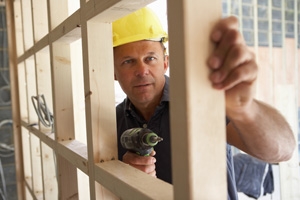
Building consents were issued for 1703 new homes in January, up 3.6% compared with January last year.
While the growth in consents in January was far from spectacular, the figures look more promising on an annual basis, with 24,776 new dwelling consents issued in the 12 months to January, which was up 14.6% on the previous 12 month period.
Of the new consents issued in the year to January, 3481 (14%) were for apartments, with the remaining 21,295 (86%) being for stand alone homes, town houses, or smaller blocks of home units or terrace houses.
Around the regions, the largest number of new dwelling consents issued in January were in Auckland (482) followed by Canterbury (467), Waikato (180), Bay of Plenty (139), Wellington (117) and Otago (91).
January's figures will give Aucklanders little to cheer about because although they were up 11% on January last year, they are still well below the numbers needed to address the region's chronic housing shortage, with the Reserve Bank estimating that 10,000 houses a year need to be built in the region just to keep up with demand, while only 7681 consents were issued in the year to January.
That suggests the number of new homes being built in the region needs to increase by 30% before supply starts to catch up with demand, but even that much of an increase would address the pent up demand for homes that already exist due to the region's high migration-fuelled population growth and low levels of housing construction
In Canterbury the 467 consents issued in January was down 10.2% on the 520 issued in January last year, adding to recent housing sales evidence which suggests supply and demand are starting to come back into equilibrium in the region, as it continues to recover from the 2010/2011 earthquakes.
Commenting on the latest figures Westpac senior economist Michael Gordon said on a seasonally adjusted basis the number of dwelling consents issued in January was down 3.8%.
"January is typically the low point of the year for the housing market, so as with the unexpectedly sharp fall in house sales that we saw last month, we're prepared to wait for another month or two of data," Gordon said.
"But it's hard to avoid the impression that the housing construction upturn has stalled in the last six months, just as population growth and recent policy measures have underscored the need to build more."
The total value of consents issued for all types of residential building work in January, including consents for additions and structural alterations to existing homes, was $645 million, virtually unchanged from the January 2014 figure of $648 million.
The figures also show that the value of building consents issued for commercial buildings continues to grow at a much faster pace than residential consents.
Consents were issued for $351 million of non-residential building work in January (which includes shops, factories, warehouses and offices as well as social service buildings such as schools and hospitals) which was up 21.5% compared to January 2014, while for the 12 months to January, consents for $5.161 billion on non-residential building work were issued, up 21.1% on the year to January 2014.
Building consents - residential
Select chart tabs
3 Comments
10 years ago, building activity in boom times was slowed not by land availability, or lending restrictions, but by simple shortages of appropriately skilled labour. Labour costs rose and as more moved into the sector, average quality of the workforce started falling. Why isnt the labour angle being discussed more? Then as now, building was a very labour intensive activity -you need lots of skilled people to build homes and there are few economies of scale -worker ratios per home built dont change that much. we eisk getting into the same problems now-as the size of the workforce grows keeping up with demand, wages and other costs will rise.
Didn't help that the government just tried to slow the housing build rate by forcing plumbers etc to getting extra certifications and putting up their prices.... remember - too many new houses were happening so it was threatening the market price of the secondhand (ie bank mortgaged) houses.
that was on top of the scraping of the apprentice system in an effort to create a booming "information economy" that would create magical money for education and education jobs from students (would would magically pay off loans which would create money for the new education jobs)
Actually more like getting certs as some of them had none and the leaky home syndrome showed more [modern] knowledge was needed by the practioners on an ongoing basis.
Funny thing but engineers, IT people, doctors etc all need education on an ongoing basis its known as professional development, but builders etc didnt.....yeah right.

We welcome your comments below. If you are not already registered, please register to comment
Remember we welcome robust, respectful and insightful debate. We don't welcome abusive or defamatory comments and will de-register those repeatedly making such comments. Our current comment policy is here.